“It’s Just a Bridge, Get Over It”: Duluth Pottery in Superior
Chris Godsey visited a new artist-created space, the Duluth Pottery--which is actually located just over the high bridge from Duluth, in the old Superior City Hall. They plan many events in their new gallery space.
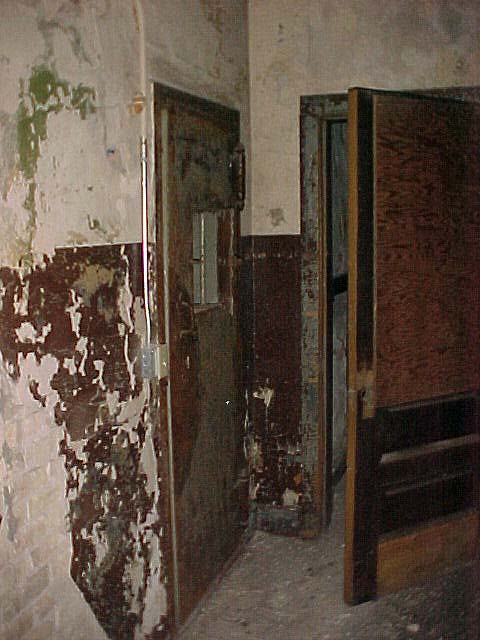

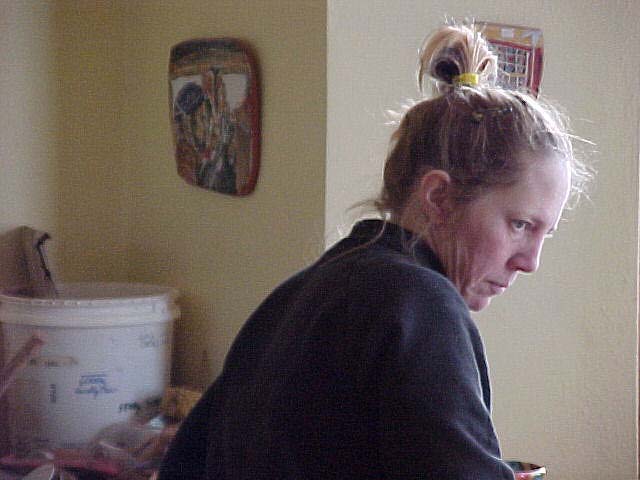
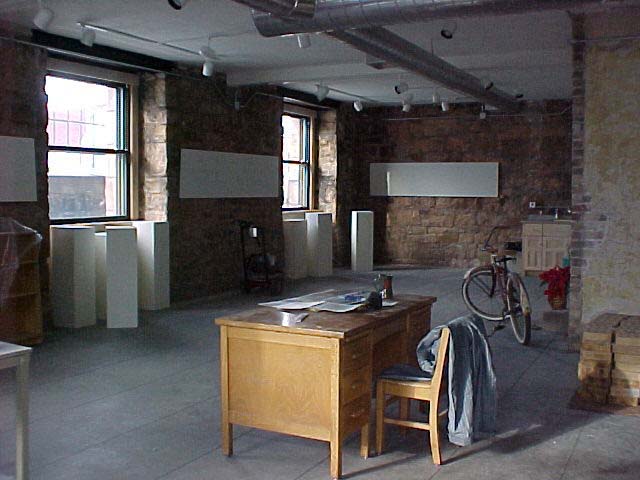
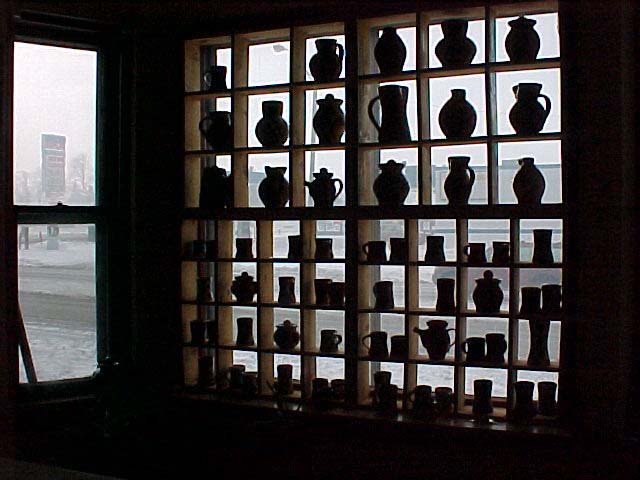
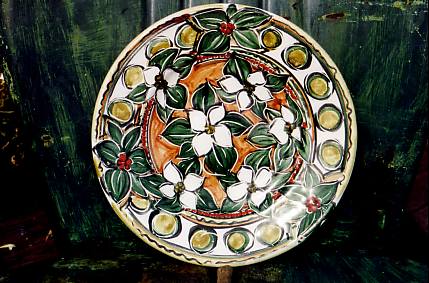
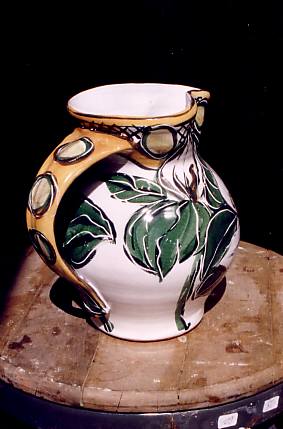
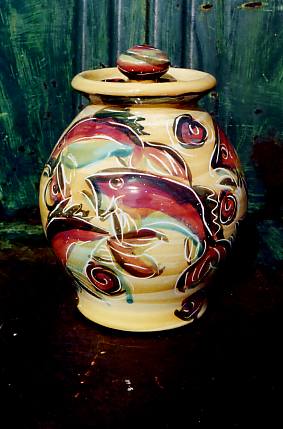
Standing in the black maw of a long-dead jail cell, Karin Kraemer shuddered. Her guest on a tour of the old building—ages ago it was the Superior Board of Trade and City Hall–did the same. Any unheated space is bound to be cold in January; these chills (more like hebeejebees) came when she opened the cell’s 100-year-old iron door: it groaned, revealing a cavern of human misery.
Who spent time in the cell? What violence or desperation led them there? What has the rusting, crumbling, dusty room seen and heard that its metal and stone can’t ever express?
“The first couple times I was in here, I lit a big bundle of sage, tossed it in, closed the door, and ran,” said Kraemer, laughing. “Lots of evil spirits and stuff in there.”
That first time was about three years ago, when Kraemer moved her pottery studio from Duluth to just across the Blatnik Bridge (locals call it the High Bridge), into the once-neglected building on Hammond Avenue, in Superior’s North End. Back then, she was among the first artists to take space in the building, which photographer and civil engineer Jeff Heller has co-owned, with various partners, since the late 1980s.
Evil spirits seem to have dissipated, but others, all positive, now permeate the building. Kraemer and Heller are among a growing group of artists—including photographers, potters, weavers, Web designers—who are transforming the building into a studio, gallery, and, possibly, living space.
“I was teaching classes at the Duluth Art Institute. I rented one room in Duluth to paint,” Kraemer said. “Then I took a second room to fire pots. I was looking for a bigger space, trying to get serious. I wanted to work out of a studio, and not combine my own work with teaching.
“Moving in here, my work completely changed. I started working bigger, spending more time on my own stuff. All of a sudden, you have rent to make; then you’re committed,” she said, laughing again (she laughs a lot).
“Having a shop here is nice,” she said. Her studio’s window, facing busy Hammond Avenue, is filled, top to bottom, with bright, bold maiolica pots. “I’ve never advertised, but almost immediately after I filled that window, people started walking in off the street. I make a sale every now and then, and those sales pay my rent.”
Rent and other landlord-tenant interactions in the building are unusually smooth, according to Kraemer and Heller. “It’s fun to work with him,” Kraemer said. “He’s a really neat person, very kind. He’s had this building for about 14 years, but he couldn’t do anything with it for a long, long time. His partners have been helping him.”
“I’m not really the landlord,” Heller said. “All I’ve done is kept the wolves from the door. I represent the owners, but nine times out of ten I’m advocating for us [artists]. If [the tenants] ask me for something, they usually get it. Everybody who’s in here never paid rent when they first came in. There’s a lot of bartering that goes on. Mike Cousino, who’s a photographer and Web guy, is going to barter something. I don’t even know what. Some people are paying like $50 bucks a month right now, and they’ll pay more when they can.”
The Undesirables, a rock group from Duluth, “recorded a CD here,” Heller said. “They didn’t have any money, so they ripped up old flooring for three weeks.”
In separate conversations, Heller and Kraemer told the story of how the building’s photographers got enlargement equipment: a woman whose husband had recently died offered it. For free.
“Three years from now, some of these people will hit it big, and they’ll remember getting their legs under them here. We kind of have a ‘bring what you’ve got, even if it’s not money’ philosophy.
“I don’t want to lose money, but I don’t worry about making it. If we can pay heat and the other bills, we’ll be fine. There’s a sliding rent scale, and those who can pay more, pay more. I think there’s a chance of someone coming through here, hitting it, then coming back and helping out. I have more faith in that coming through than in figuring out the right way to word a grant application or calculating the best interest for a loan.
“I’m not a wealthy person, but this building has never cost me more than money. It’s definitely given me more back in emotion than money could.”
“It’s still the beginning,” Kraemer said. “We’re doing this in organic fashion.”
“All the right people have walked through the door,” Heller said. “Everyone who’s here has sought the place out. Everyone who comes has seen the building at its most down-and-out, then they make their space what they want, which is cool.”
An early December show in the building’s new gallery space—an earthy mix of reclaimed wood, deep colors, and powerwashed stone–drew just over 300 people. “I know the night of that show, everybody said, ‘There’s some tremendous energy here,’” Heller said. “We had some street people here, some very well-off people—but that night you couldn’t see a difference between them. There was no hostility or tension. Nobody got on each other for anything. Whether that was the space contributing to the feeling in the room, I don’t know, but I think it was.
“What other art gallery opens and has all the people who put it together—carpenters, electricians, especially ones who aren’t really art people—show up because of how positively they feel when they’re working here?”
Gallons of paint, large-scale demolition and construction, and backbreaking rubbish hauling have transformed parts of the building. “We hauled three 40-yard dumpsters of junk out of here,” Kraemer said.
But there’s still a lot to do. A pottery class/studio area and kiln room are in the works. Iron doors and railings, marble tiles, and other salvaged materials will be woven into renovations. A new roof is needed, and if people are going to live there, an elevator is required. That’s only the start.
“We’d like to create a hang-out space within the gallery,” Heller said. “We’d put some of our work up, some work of our friends.”
“Imagine being served coffee in really cool pots and cups that were thrown in the same building, surrounded by photos that were developed and framed here, and other art created here” Kraemer said. “We’d like to include music. We’d like to open gallery space to what anyone wants to do. Maybe a weird, experimental theater. Maybe art that doesn’t fit on a wall.”
This time, she shuddered with excitement.
A spirit of transformation was strong among all the artists hanging out in the building—they still haven’t figured out exactly what to call it—on a couple mid-January afternoons. Heller, Kraemer, Cousino, potter Dan Edmunds, weaver and knitter Erika Mock, other artists intent on various projects…they all said something about the building is pushing them to produce, and they seemed convinced that the powers of community and creativity are helping them transform not only a physical space, but its soul.
“I’ve been sleeping here many times,” Heller said, pointing to an air mattress on the floor of his office, “and woken up with that feeling—you know that feeling on your skin, like something else is present?—and it felt really good.”
“The night I painted the ceiling in that gallery, I was here all night,” Kraemer said. “I was very conscious of feeling a positive presence. It’s almost like the building was grateful for us getting it cleaned up. There have been many times when I’ve been the only person here, but I know I’m not alone. It sounds weird, but it’s always a really positive experience.”
Photos, except where credited, by Chris Godsey. As always, click on them to enlarge.